

SCRAP METAL LEGISLATION LAYING ‘WASTE’ TO THE WHOLE INDUSTRY? AIR CRASH INVESTIGATION THE TRAGIC CONSEQUENCES OF MISUNDERSTANDING STAINLESS STEEL ABRACADABRA! Stainless steel’s magical passive layer PROFESSIONAL PROFILE Energy and enthusiasm seize the day!

Perspective Sassda reached new heights in 2022

Market Intelligence State of the Stainless Steel Nation

Industry Analysis Scrap metal legislation
Industry Insight Global Report shows that stainless steel is in a recycling class of its own

Market Intelligence The best of the GPS e-Newsletter
Industry Networks A platform for deliberate action Advertorial NDE Harnessing the power of adversity through consistency
Webinar Report Back How to maintain & protect stainless steel’s passive layer
Case Study
Air crash investigation - the tragic consequences of misunderstanding stainless steel
Professional Profile Energy and enthusiasm seize the day!
Africa Focus Tanzania - Home to the bluest minerals and abundant blue sky potential
Member Insight Tap into innovative employment initiative YES4Youth
Training Focus Sassda scores top marks in the classroom in 2022!
Obituary - Vaughan Davis Farewell to an industry stalwart
Member Focus Gauteng Golf Day hits a hole in one!
ISSUE 3 2022 adverts features contents 1 3 7
10
29 31 35
NDE Inox
Schultz
Unique
11 23 ISSUE 3 2022 27
Columbus Stainless
Systems
Incorporated
Welding
HEADLINE SPONSOR 13 15 19 33 36
perspective
Contact us
Tel No 011 883 0119 Email info@sassda.co.za Website www.sassda.co.za
Sassda
MICHEL BASSON
Executive Director michel@sassda.co.za
FRANCIS LE ROUX
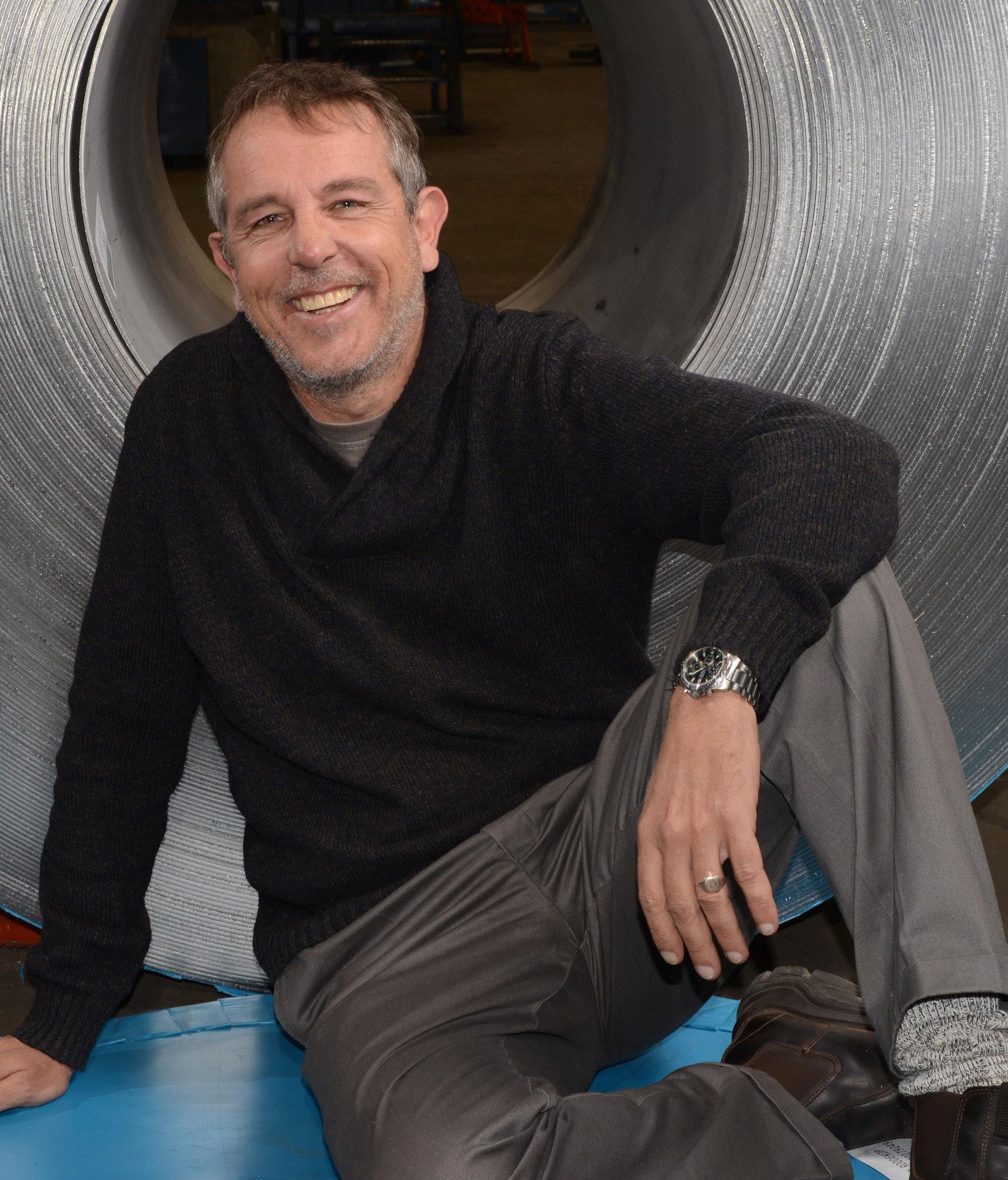
Head of Administration francis@sassda.co.za
MANKABE MORE Education & Training and Marketing mankabe@sassda.co.za
LESLEY SQUIRES
Market Intelligence and Exports lesley@sassda.co.za
KIM STEVENS
Events, Email Marketing and Website kstevens@sassda.co.za
JOSE HERON Accounts jose@sassda.co.za

LUISE ALLEMANN
Content, Social Media and PR luise@mediaink.co.za
Stainless steel is published quarterly and is distributed to stockists, distributors, fabricators, specifiers, consulting engineers, architects, mining, petrochemical and chemical industries, food beverage and pharmaceutical industries, consumer outlets, end-users, educational institutes and provincial and government departments. Sassda makes every effort to ensure the accuracy of the contents of its publications, but no warranty is made as to such accuracy and no responsibility will be borne by the publisher or Sassda for the consequences of any actions based on information so published. All opinions, views and expressions contained in this publication are not necessarily those of the management of Sassda. The contents of this publication enjoy positive protection under the Copyright Act and therefore copyright thereof is expressly reserved. Any copying, publication and distribution of part or whole of the publication is prohibited unless consent is granted by Sassda.
ISSUE 2 2022 1
SASSDA REACHED NEW HEIGHTS IN 2022 Issue 3 2022
This is our last edition of the Stainless Steel magazine for 2022 and since it is November, it forces us to reflect on a year that seems to have flown by. It has certainly been busy, not only for Sassda’s staff and collaborators but also for our industry as it returns to yet another ‘new normal’ after COVID-19. This new normal has also seen a new set of challenges such as the conflict in Ukraine and the resultant turmoil in Europe and the uncertainty of energy supply on the local front.
At Sassda, our return to postpandemic normality included “mothballed” activities such as physical training and meetings. But in general, we continued with our efforts to promote the use of stainless steel and to increase the tonnage that receives added value through local fabrication. We remained true to our mandate to fulfil these requirements with the end result of protecting current jobs and exploiting the potential for new job creation.
VITAL NETWORKING
Sassda is not alone on this mission and our collaboration with other industry stakeholders such as Business Unity South Africa, the Manufacturing Circle, and others as part of the Steel Master Plan (SMP), is starting to pay dividends. Through strong lobbying Sassda has pushed local demand side opportunities to the fore at the highest levels of the SMP during 2022.

For example, research into the localisation of beer kegs has shown vast potential for manufacturing for local demand and also for export markets. We believe that some tangible results will start to show on the initiative during the next 12 months and can lead to the start of a whole new industry in our economy.
Research also confirmed that the cutlery and hollowware sectors have good potential for the use of stainless steel that will result in job creation, albeit that the tonnage of material used might not be as high. In light of this, Sassda is currently working on finding the synergies between potential government procurement, and demand in the private sector, through the major retailer organisations within our borders. Once again, part of the vision for the localisation of cutlery and hollowware will see boosted exports into Africa. As with the beer kegs, we aim to give strong progress reports through the course of 2023.
TRAINING REACHES NEW HEIGHTS
As mentioned earlier, we also reactivated all our training products which had to be halted due to the rules of the pandemic. The take-up on our practical in-house courses as well as our Advanced Stainless Steel course was surprisingly high. We have exceeded our expectations by enrolling close to three times the historic number of students at this year’s presentation of the Advanced Course which included a Columbus mill visit. We presented our Fundamental Course five times during the past year with full attendance each time.
This stellar attendance at our formal courses as well as the high interest in our weekly webinars shows there is a strong drive in our industry to learn more and to stay abreast of all things stainless steel. The Sassda promise to our members and industry for 2023 is clear: Sassda will continue to be the source of quality information and technical assistance in the future.
ENHANCED COMMUNICATION
Sassda also learned lessons during the past year, and we will incorporate this into our thinking as we move into the new year. One

of the most important was that the growth of our industry and economy is a team effort based on effective communication between all stakeholders so that our efforts can be focused on a national goal. To this end, we have developed strong relationships with our peers, and we are looking forward to 2023 asayearofallowingthemomentum gained in the Steel Master Plan boardroom to spill over into the fabrication sector. This will start to yield results on getting the South African steel industry on a growth path again.
Enjoy this final Stainless Steel magazine issue for 2022, have a peaceful and restful holiday period, and we will be back next year to support you in all things stainless..
Michel Basson Sassda Executive Director
ISSUE 3 2022 2
market intelligence
STATE OF THE STAINLESS STEEL NATION
champion the use of local stainless steel holloware products,
why localisation has such a big role to play in growing the industry…
What are the latest developments on the Steel Master Plan?
Over and above normal business prospects, work on the government’s Steel Master Plan (SMP) is continuing in earnest. A number of industry bodies and role players from the private sector are now fully involved in giving the initiatives forthcoming from the SMP some momentum. Opportunities to increase local demand are being investigated and forwarded to the dtic and IDC for input and assistance.
The localisation of items within the hollowware and cutlery subsector is being planned, as well
as products in the catering and beverage industries. Keeping in mind that around 10 000 tons of stainless steel finished goods are imported each year with the vast majority being hollowware and catering items. This indicates that with such an initiative in place a sizeable share of this tonnage can be added to local consumption through localisation.
In theory, this type of initiative can add up to 5% to local consumption and lead to sustainable job creation. Some of the initiatives also focus on increasing local capacity for the manufacture of intermediary products such as pipe, tube, wire, etc.
What is your full view on the importance of localisation for the local stainless steel sector?
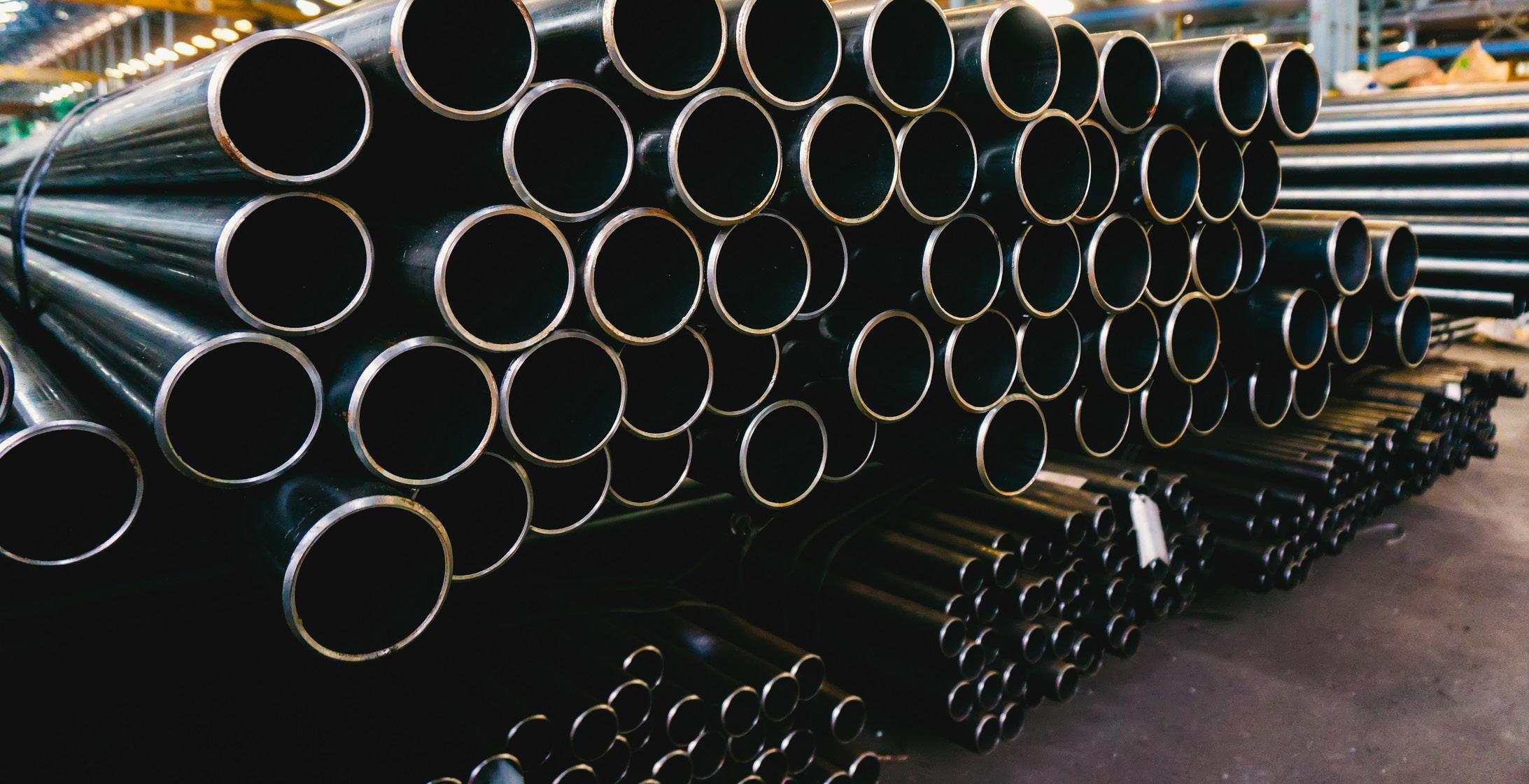
Import replacement or localisation at first glance looks like a fairly simple process, but many things need to be considered. Localisation for the sake of localisation doesn’t make sense since the aim is to localise whilst remaining globally competitive and creating sustainable and meaningful work. Thus, the selection and evaluation of different proposals become complicated.
Obstacles in the process would be the fact that capacity exists across different industry sectors,

ISSUE 3 2022 3
Sassda Executive Director Michel Basson outlines his ‘view from the top’ on key local sector topics such as the latest on the Steel Master Plan, Sassda’s efforts to
and
but that the complete picture of industry capacity remains somewhat grey. This is not the fault of any one entity, but rather a historic lack of inter-sectoral communication and cooperation.
A good example would be our current initiative to localise products in the hollowware, cutlery, and catering sub-sectors. Capacity to do pressings would be required and a sector-based capacity audit might report specific gaps. However, the automotive industry has an overcapacity on pressing capacity and the 10 000 t of localisation potential in this market can slip through our fingers if we do not communicate on a broader level in the industry.
Many instruments can also be used to make local products more attractive for local buyers such as designation and import duties, as well as financial support to local suppliers. However, it remains a fine balance when evaluating these factors in terms of their longer-term impact on global competitiveness and sustainability.
Please outline your work to champion the use of stainless steel products ‘by South Africa and for South Africa’?

Opportunities to increase local demand for stainless steel are clear in sectors such as government infrastructure and localisation rollouts, as well as export promotion and the greening of the industry, development of industry value chains, and ease of doing business as growth measures for our industry.
Of special interest, the localisation of stainless steel items within the hollowware and cutlery sub-sector is being planned, as well as products in the catering and beverage industries. Bearing in mind that around 10 000 t of stainless steel finished goods are
imported each year, with the vast majority of it being hollowware and catering items. This indicates that with such an initiative in place a sizeable share of this tonnage can be added to local consumption through localisation. In theory, this type of initiative can add up to 5% to local consumption and lead to sustainable job creation.
Please outline Sassda’s current key initiatives/ work with government departments?
Sassda has a strong partnership with the dtic and other structures such as the IDC and WECONA within government and, as such, is recognised as the official voice of the stainless steel industry.
As stated, Sassda has been very involved in the Steel Master Plan to develop local capacity, identify downstream demand, and stabilise the steel industry. In this regard, Sassda has assisted the government in terms of information, statistics, identifying potential suppliers to ensure full local participation in projects where 100% local content is required, and the training of
technical staff in government departments.
As part of this process, Sassda has also identified the potential localisation of stainless steel products currently being imported in conjunction with industry partners such as BUSA and the Manufacturing Circle. One of the initiatives under this localisation drive is aimed at increasing local capacity for the manufacturing of intermediary products such as pipe, tube, wire, etc.
How would you categorise the performance of the South African stainless steel sector pre-COVID (March 2019-2020) versus March 2022 as well as its performance in the last six months - does this point to stagnation or growth?
Even before COVID-19 there was a steady decline in the level of local stainless steel consumption. (The term consumption relates to the stainless steel used within the national borders of South Africa including the level of local production and imported material -less exports of material.)
“The industry made a good recovery by reaching consumption figures of 111 000 t by March 2022, bringing it close to pre-pandemic.”
ISSUE 3 2022 4
When the growth figure for the 12 months leading up to March 2020 is compared to the number for the 12 months preceding March 2019, a drop of 18% was measured. Local consumption showed a decline from 145 000 t to 119 000 t pre-COVID-19. This was in line with an existing slowdown in the economy.
During the following year up to March 2021, apparent consumption declined further to around 75 000 t, but the industry made a good recovery by reaching consumption figures of 111 000 t by March 2022, bringing it back to similar pre-pandemic levels.
This is encouraging, but still not near the 150 000 t that were consumed annually between 2015 and 2018. It is also far from the annual consumption of around 200 000 t that was used in the years preceding 2015. In short, the levels of local stainless steel consumption have been declining for the last eight years and are
still under pressure, even after seemingly having recovered from the effects of the pandemic.
That said, South African stainless steel products and expertise are still in high demand and, with current exchange rates, the future for our industry might be much brighter than the current figures indicate.
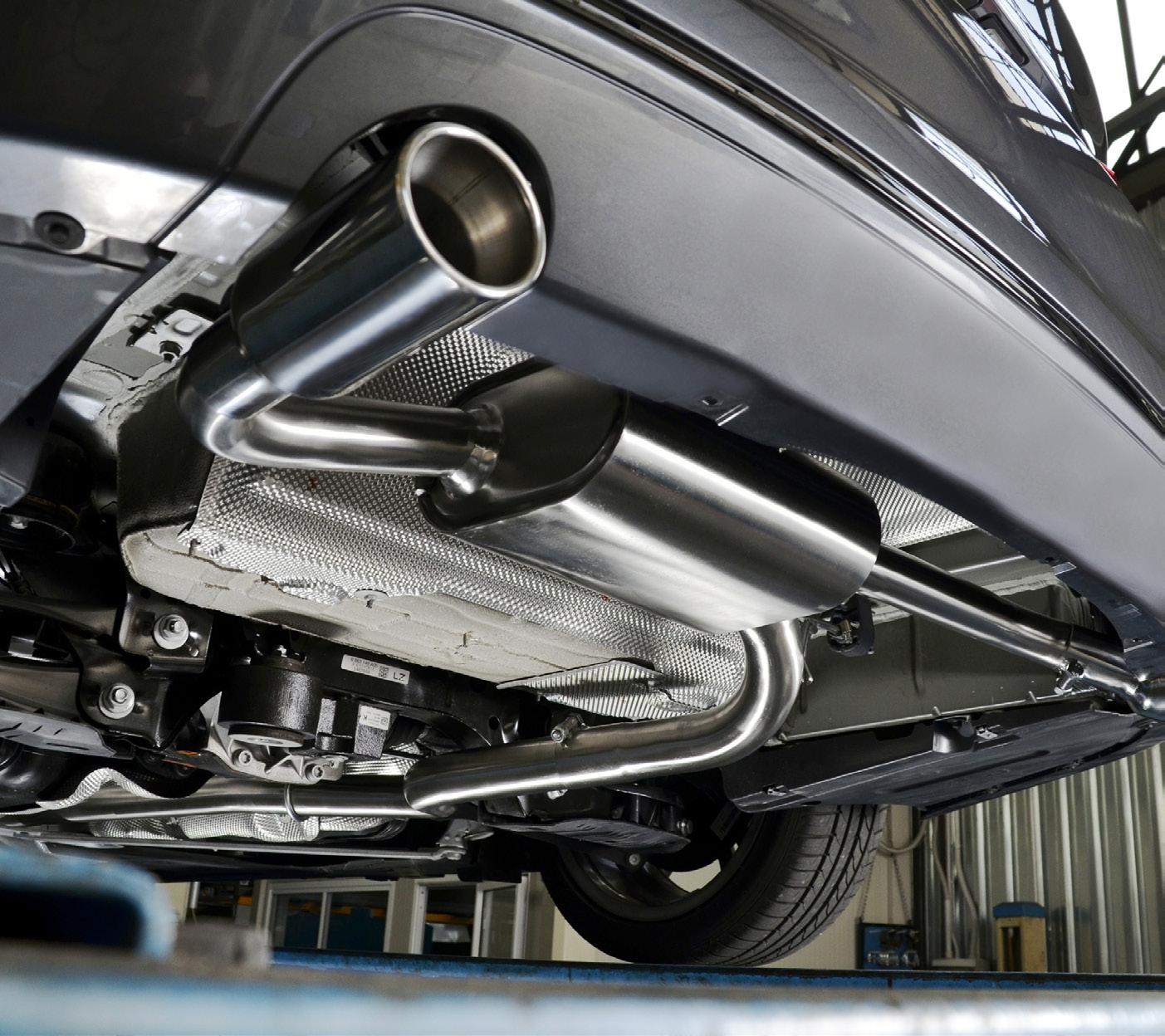
What are the greatest challenges currently facing the local sector?
At this stage, a dependable energy supply tops the list. The bottomline is that initiatives to increase the local consumption of stainless steel - and there are a range of them - will have no impact without the ability to produce material using a reliable power supply.
For example, during the latter part of September 2022 year, some of our energy-intensive members were not able to produce at all,
but even less energy-intensive members were struggling to maintain the levels of productivity and efficiency required to remain competitive in their respective markets.
Another challenge is that global logistics problems are still impacting timeous exports and imports as well as shipping costs and fabrication lead times, and the current low state of efficiency at the national ports also does not contribute to solving the situation.
However, it is not all doom and gloom. Stainless steel is not only a preferred material for many industries and products, but in most cases the only material that would be used. Many projects in this regard have been halted by the pandemic, but still need to continue. For this reason, many sectors of the stainless steel industry report excellent current and medium-term order books with a good prospect to maintain this work level. Our member expectation index has shown that there was a steady increase over the last three months in business confidence and this measurement is currently hovering above 55%.
The Southern Africa Stainless Steel Development Association (Sassda) is one of the most active stainless steel industry associations in the world and has, been involved in increasing the awareness and use of stainless steel in Southern Africa. The organisation provides a platform for Sassda members to collectively promote the sustainable growth and development of the industry with the main emphasis on stainless steel converted within the South African economy. Sassda is doing this by providing the industry with a world-class level of technical information and advice, education, training, as well as market, industry, and business development.
ISSUE 3 2022 5
“Many sectors of the stainless steel industry report excellent current and medium-term order books with a good prospect to maintain this work level.”

industry analysis
SCRAP METAL LEGISLATION

Laying waste to the whole industry?
The Department of Trade, Industry and Competition (the dtic) gazetted its draft policy proposals, to regulate and restrict scrap metal trade in South Africa for public comment, in August 2022 which has yet to be tabled. The proposed scrap metal legislation forms part of Government’s plan to crack down on copper theft but does it run the risk of jeopardising the future of legitimate players in our industry?
THE BACKDROP
The draft scrap metal trade policy changes are a direct outcome of President Cyril Ramaphosa’s 2022 State of the Nation Address, where he promised to tackle growing criminality in the scrap metal value chain – particularly
with copper theft and other metals stolen from public infrastructure. This is because criminals can easily conduct their black market businesses as it’s cheap to import furnaces to transform the metals, and there is no formal permit or registered trader regime to identify the legitimate sellers from the dodgy ones. The department
proposes a host of policy measures to put a stop to this, including:
• Imposing a six-month ban on the exports of scrap metal from South Africa;
• Expanding the definition of waste and scrap metal to include other common types of metal that are exported;

ISSUE 3 2022 7
• Temporarily suspending the price preference system (PPS) for scrap metal exports, with some exceptions;
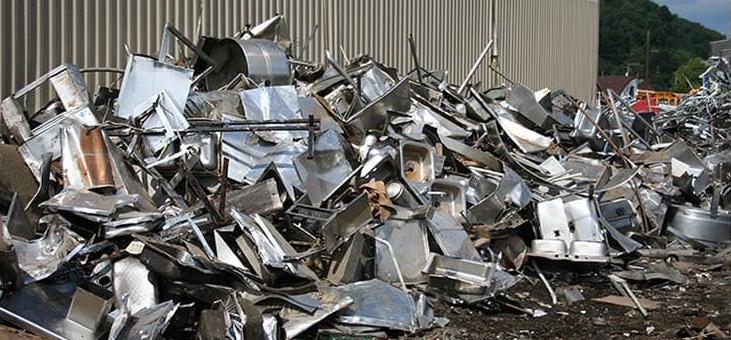
• Developing a permit system for the export of these metal products;
• Developing a permit system for the import of furnaces and other scrap transformation machines;
• Creating a registration regime for scrap metal sellers with enhanced registration and strict reporting requirements;
• Restrictions on who can sell scrap metal and adding requirements that buyers only purchase from registered sellers;
• Beefing up border controls;
• Prohibiting the use of cash in scrap metal transactions;
• Black-listing offenders (Source: BusinessTech.co.za)
WORRYING IMPLICATIONS
Sassda Acting Executive Director Michel Basson says; “In principle, Sassda is supportive of the proposed legislation to stop the economic damage due to metal theft and infrastructure destruction. However, the fact that all metal waste and scrap are subjected to the proposed
measures, is raising some questions within the stainless steel sector.”
He reports that as a memberdriven association, Sassda received an immediate response to the proposed legislation from its member base. “While the majority of Sassda’s 187 member companies agree that the theft of copper and destruction of infrastructure remains one of industry’s major challenges to growth and sustainability, the association received some response that agreed with the broad approach that the minister has decided upon by including stainless steel in the measures.”
DIGGING DEEPER
The Genesis Analytics report to the dtic earlier this year, showed that the majority of the R45-Billion direct damage to infrastructure is mainly due to copper theft with other targeted infrastructure items including railway lines (carbon steel), streetlights (copper and galvanised carbon steel), traffic lights (copper and galvanised carbon steel), manhole covers (carbon steel), trellises and fencing (carbon steel) and steel railings (carbon steel possibly with stainless steel content). From this,
it is clear that the theft of stainless steel has a very small impact on the issue at hand. It is therefore important to note the following:
• Local demand as an alternative to export markets -There is a very limited local market for stainless steel scrap and waste and the local mill will not require stainless steel scrap in foreseeable future. The recycling and scrap export organisations within the stainless steel industry will be severely impacted by the proposed export restrictions in terms of cash flow, profitability, and contractual obligations. These members report potential job losses.
• The value of stainless steel scrap and waste in business models - Stainless steel is an expensive input material. Fabricators do not see scrap as waste, but the value of stainless steel scrap is an integral part of the business model and crucial for competitiveness. An industry standard is that fabricators will create scrap of 20% or more from the input material. The lack of a market for stainless steel scrap or an artificial lowering of its
ISSUE 3 2022 8
value due to a ban on the only trade mechanism for scrap will seriously impact cash flow, competitiveness, and profitability. This will impact the sector’s ability to create or maintain jobs and hamper fabricated exports, while giving a cost advantage to imported stainless steel items.

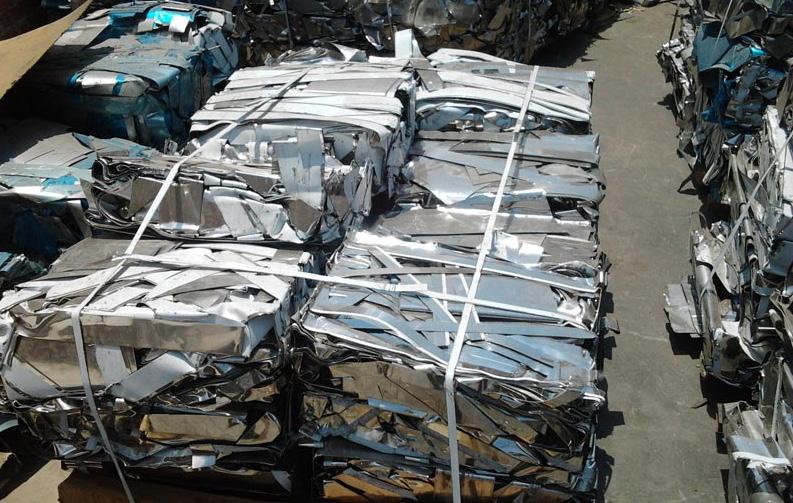
• Restrictions on access to technology - Much of the equipment that would be banned from being imported through the proposed measures is regarded as critical for the distribution of stainless steel material and fabrication of stainless steel products. With the current increased workload in the stainless steel industry, access to this type of equipment for local fabricators and distributors would be crucial. Many fabricators, especially in the food and beverage industry, are currently negotiating the procurement of equipment from international suppliers including forming technology, e.g., press brakes and presses; various types of metal cutting technology, e.g., laser, plasma cutters, etc., and coil processing lines such as de-coilers and coil slitters. The lack of access to equipment and technology will negatively
impact the industry’s ability to be globally competitive and the ability to localise currently imported products. This decision conflicts with certain initiatives in the Steel Master Plan.
• The lack of success with past measures - The measures imposed by government in the past include a similar ban in 2020 that was aimed at supplying local demand during COVID-19. This ban did not make a positive impact on the illegal
trade in copper or damage to infrastructure. The legislative changes made in terms of sentencing and bail made in 2016, as well as policing improvements made in 2016, 2017 and 2022, did not contribute to the decrease in copper theft and infrastructure damage. It would therefore be highly unlikely that the ban on the export of stainless steel scrap and waste, including semi-finished products, will have an impact on copper theft and infrastructure damage.
• Global view - From a sustainability and environmental viewpoint, it should be mentioned that according to Worldstainless, 96% of end-of-life stainless steels are captured and recycled. This proportion is the highest global recycling rate of any recyclable material used anywhere in the world. Therefore, a domestic restriction on exports of scrap will undoubtedly become a recycling constraint for the global stainless steel industry.
ISSUE 3 2022 9
industry insight
GLOBAL REPORT SHOWS THAT STAINLESS STEEL IS IN A RECYCLING CLASS OF ITS OWN
Worldstainless.org has released a useful summary of a study which quantifies the stocks and flows cycle of stainless steels. Conducted by Barbara Reck, Senior Research Scientist at Yale University, the study ‘Comprehensive Multilevel Cycle of Stainless Steel in 2015’ concluded that on average, 85% of stainless steels are recycled once they reach their end of life, either to become new stainless steels (56%) or a valuable iron source for carbon steels (29%).

This makes stainless steel the champion of recycling with around 90% of end-of-life stainless steel collected and recycled into new stainless steel – without loss of quality.
The growth in the use of stainless steel has been the highest of any material in the world. Stainless steel’s properties, such as its 100% recyclability, durability, minimal maintenance requirements, and product safety partly explain this amazing consumption surge.
Given its durability and longevity, stainless steel is typically in use for many years before it becomes available for recycling. The average lifespan is
estimated to be around 20 years, but there are examples of stainless steel in use for a century and beyond. All stainless steel, still in use, represents a valuable source of potentially recyclable raw material.
The high value of stainless steel scrap makes it worth collecting and sorting and this is the reason why it is recycled at such a high rate. The only limitation is the availability of scrap, especially in emerging countries, due to its durability. For example, when stainless steel is used in buildings,
it remains there for years and cannot be reused until the building is demolished.
Depending on the type, location and availability of stainless steel scrap, the production of stainless steel in an Electric Arc Furnace (EAF) can be economically advantageous. In addition, the recycling system for stainless steel is very efficient and requires no subsidies.
CLICK HERE TO READ THE FULL BROCHURE

ISSUE 3 2022 10
market intelligence
THE BEST OF THE GPS E-NEWSLETTER
Each month Sassda rounds up a selection of global and local market intelligence articles that are sent to our members in an easy-to-read package of content. They’re designed to highlight pockets of potential growth for stainless steel. Here are some of the best articles from the last few issues...
RENERGEN SWITCHES ON SA’S FIRST COMMERCIAL LNG PLANT
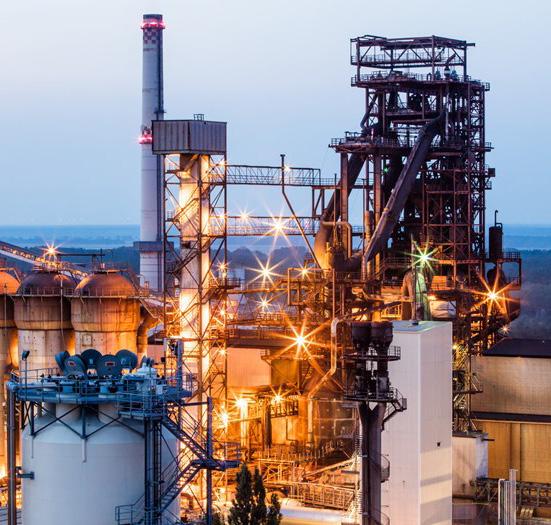
Renergen’s Virginia Gas Project in the Free State has begun operating, transitioning the company from an explorer to a producer of liquid hydrocarbons. Through the commencement of operations, Virginia becomes South Africa’s first commercial liquified natural gas (LNG) plant, with helium production to follow as the project ramps up. Renergen will now focus on ramping-up operations over the coming months to full Phase 1 capacity which will assist its commercial customers to substitute diesel in trucks for gas, reducing their carbon footprint…. READ MORE


PRIVATE PARTNERS SHORTLISTED FOR DURBAN AND NGQURA PORT UPGRADES

Transnet has reached a significant milestone in its programme to upgrade two of South Africa’s key ports, with the shortlisting of respondents for private sector participation in the Durban Container Terminal Pier 2 (DCT2) and Ngqura Container Terminal (NCT). Transnet is repositioning Durban as a gateway hub port, and plans for significant growth in container capacity over the coming years… READ MORE
AFRICA
Sasol and ArcelorMittal South Africa have signed a joint development agreement to develop carbon capture technology to produce sustainable fuels and chemicals. The partnership includes plans to revitalise ArcelorMittal’s inoperative steel plant in Saldanha Bay to produce and export green steel manufactured without fossil fuels through green hydrogen and other processes…
READ MORE
ISSUE 3 2022 11
SASOL PARTNERS WITH ARCELORMITTAL TO DEVELOP A GREEN HYDROGEN HUB IN SOUTH
SOUTH AFRICA CONCLUDES AGREEMENTS WORTH R270BN IN SAUDI ARABIA

Saudi Arabia and South Africa signed agreements and memorandums of understanding worth about $15-Billion (over R270-Billion) during a state visit by President Cyril Ramaphosa to Riyadh last month. Both countries agreed to explore investment sectors and opportunities in areas of common interest, especially renewable energy, industry, mining, tourism, logistics, and agriculture. The president also invited Saudi Arabian businesses to South Africa’s fifth investment conference in 2023…READ MORE


EARLY-STAGE ENTREPRENEURIAL ACTIVITY IN SOUTH AFRICA SURGES BY 62% IN WAKE OF THE PANDEMIC
KEY STAINLESS STEEL DEMAND SECTOR GEARS UP FOR INCREASED CONSUMPTION
The City of Cape Town has teamed up with the Western Cape Economic Development Partnership and industry business partners to launch a Food and Beverage Growth Coalition, aimed at boosting the development of the region’s food and beverage manufacturing sector and its exports. Food and beverages have always been one of the biggest sub-categories within Cape Town’s manufacturing industry, contributing 3.6% of Cape Town’s gross value add and 4.1% of its formal employment...READ MORE

Despite the difficult economic conditions that South Africa has endured over the past two years, the country is still managing to see a surge in entrepreneurial activity with many entrepreneurs reporting that they have identified new opportunities because of the pandemic. Yet the global entrepreneurship monitor (GEM) reveals that ease of access to finance remains a perceived barrier for the country’s entrepreneurs… READ MORE

THE NIGERIAN STEEL PLANT THAT NEVER WAS Nigeria has pumped more than $8-Billion into Ajaokuta Steel Company, a project which began more than 40 years ago but has yet to produce one tonne of steel. Several attempts have been made to bring the plant into production, but without success. It was built to 98% capacity by the Soviet Union’s Tyazpromoexport. But the lack of a rail line around the plant, and changes in political and operational management over the years, stymied completion… READ MORE
LOCALISATION IS NOT A FREE LUNCH, BUT IT DOES LEVEL THE STEEL INDUSTRY PLAYING FIELD
Stats SA reports that writing in the DailyMaverick.co.za South African Iron and Steel Institute Secretary General Charles Dednam says localisation on its own can never drive industrialisation, and neither can import substitution, but a situation for fair trade should be created, clear of corruption and illicit import transactions… READ MORE
ISSUE 3 2022 12
industry networks
A PLATFORM FOR DELIBERATE ACTION
“For as long as women shoulder the greatest burden of poverty, for as long as they are more likely to be unemployed, for as long as they are paid less than their male counterparts, for as long as women confront these and other challenges, our vision of an equal and just society will remain elusive.”
-President Cyril Ramaphosa.
Sassda Market Intelligence Specialist Lesley Squires recently attended the second annual meeting of the Women’s Economic Assembly (WECONA). This follows the inaugural WECONA that was launched by President Cyril Ramaphosa in October 2021.
The forum now functions as a multistakeholder initiative to advance women’s economic empowerment and inclusion and emphasises the participation of womenowned enterprises in the entire value chain to foster sustainable economic development.
A YEAR OF ACTION
In the 12 months since its inception, WECONA has negotiated sectorspecific preferential procurement
targets, undertaken a review of representation in management structures and secured commitments from sectors that have fallen behind in meeting transformation targets.
As a result, the private sector, civil society, women’s organisations, businesswomen, government and Sassda have subsequently facilitated the participation of women-owned businesses in core areas of the economy.
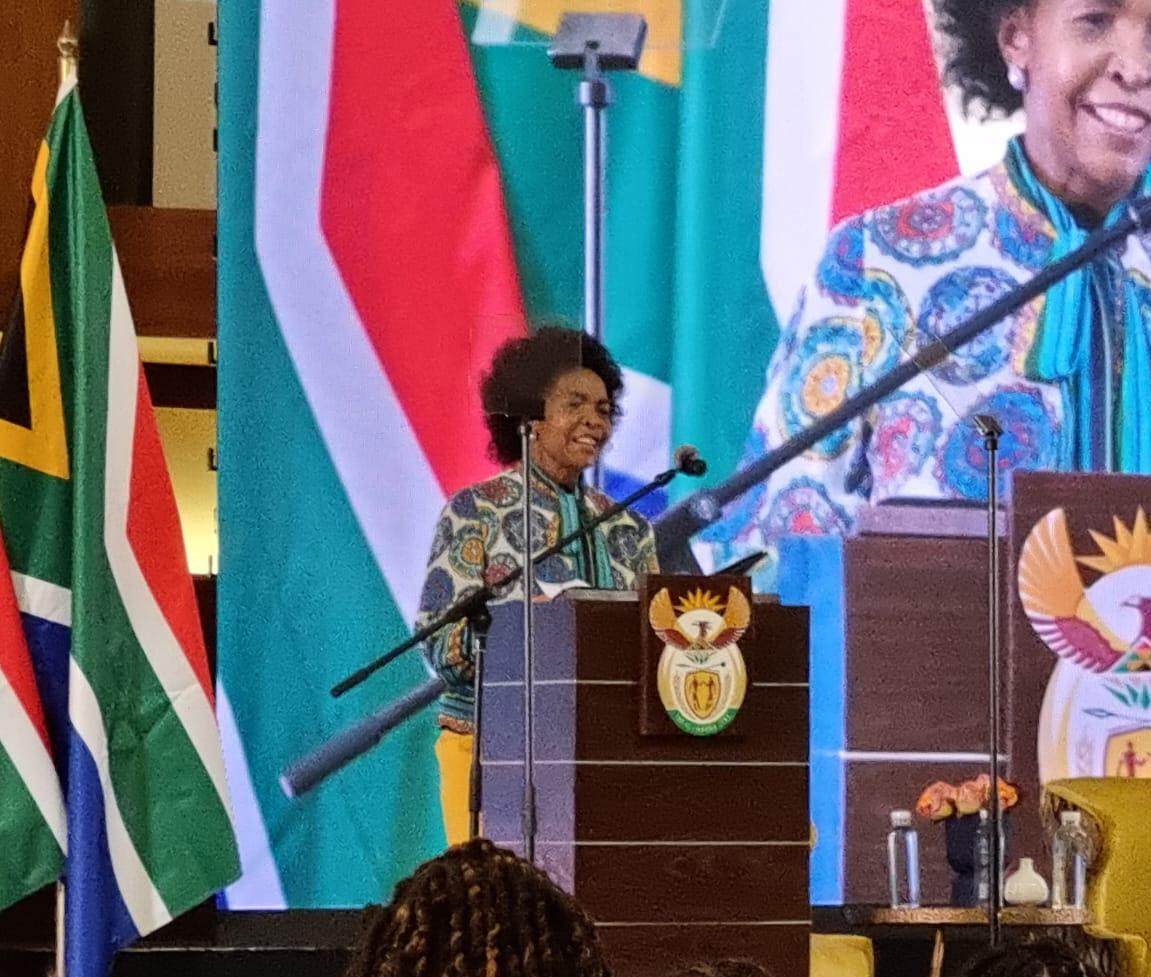

In line with this, Sassda committed to training all women, whether members of the association or not, for free for the 12 months since October 2021. The association has subsequently trained 128 women across a range of courses, from introductory to high level technical courses. In addition, ad-hoc training such as technical webinars achieved up to 35% female attendance.
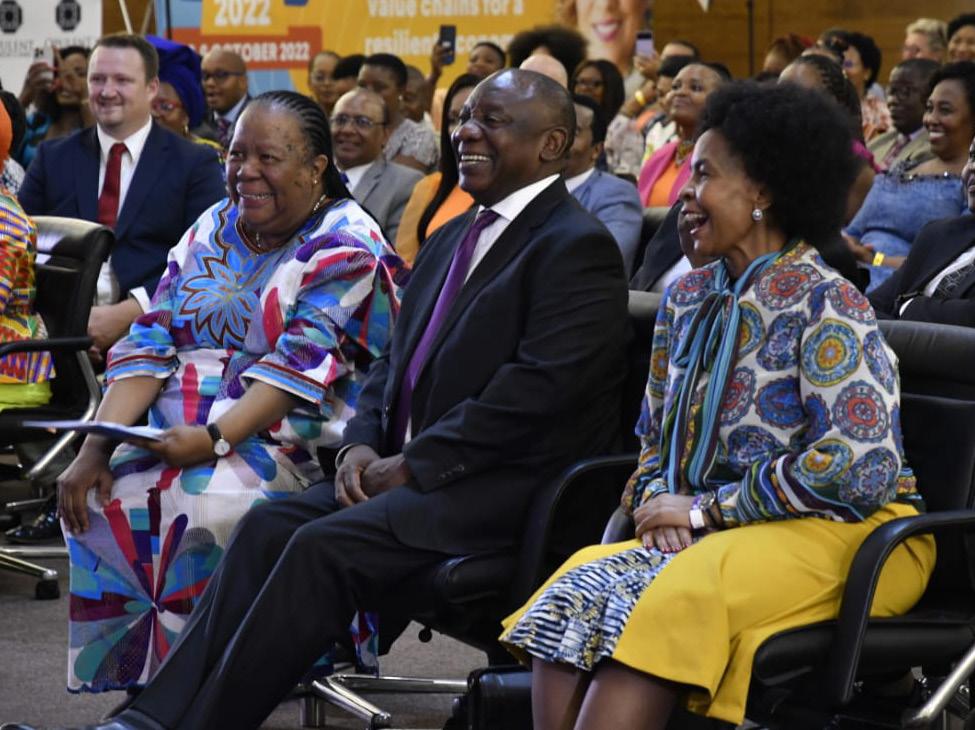
ISSUE 3 2022 13
TRANSFORMATION CONVERSATIONS
Commenting on the broader effects of the initiative, WECONA CoChairperson Namhla Mniki said, “Since the inaugural event last year, there have been transformational conversations with industry associations and representatives to establish procurement targets.
“This will ensure that femaleowned businesses have increased levels of participation within those value chains and these dialogues have led to the implementation of game-changing initiatives in several sectors, including the financial industry and automotive sectors,” Mniki reports.

COLLABORATIVE SUCCESS
The second WECONA brought together the private sector, including businesswomen, government, and and civil society to transform the economic landscape in South Africa.
WECONA Co-Chairperson Futhi Mtoba said this year’s assembly builds on last year’s launch, which gave them the wind in their sails to go out and meet with various sectors in mapping the economic landscape of the
country.
“We found a willingness to partner with us to transform value chain ecosystems to ensure a more equitable share of business in this country goes to women. The second assembly allows us to present what has been achieved, and to bring in new voices and sectors to continue our goal of transforming the business landscape of this country,” Mtoba said.
This year’s assembly was held under the theme, ‘Unlocking gender-responsive value chains for a resilient economy’, with a focus on showcasing how the public and

private sectors have implemented their commitment towards gender transformation in industry value chains.
The theme also alluded to South Africa’s economic recovery, which is at risk of becoming a futile exercise if women are deliberately excluded from participating in value chains in various sectors.
Commenting on the ongoing success of Sassda’s participation in the initiative Squires says, “We are excited to continue our participation in WECONA as part of Sassda’s mandate of representing and advancing our members’ interests at these key sector platforms”.
ISSUE 3 2022 14
advertorial NDE
HARNESSING THE POWER OF ADVERSITY THROUGH CONSISTENCY
The South African stainless steel sector has experienced unprecedented challenges since the onset of the COVID-19 pandemic in early 2020, but Sassda Member NDE’s Managing Director Hardy Esterhuizen says it has also created a host of opportunities…


How has the South African stainless steel industry fared since March 2020 when COVID-19 first began?
I would actually say fairly well, thanks to what I term a two-year ‘super cycle’ of productivity and growth. The first reason for this is that, although the COVID-19 lockdowns curtailed production, they also created the ideal opportunity to conduct the necessary maintenance, expansions and upgrading of plants and factories. Once things did open up, local producers and manufacturers then had enhanced facilities to catch up on significant backlogs which amped our industry’s output levels.
However, the real boost and second reason for my saying so was a result of severely constrained global supply chains in 2021. Particularly in China where the amount of exported finished products was severely restricted and disappeared almost overnight in some cases.
ISSUE3 2022 15
This was of great benefit to our local sector as it was forced to fill the gap in the supply of these previously imported goods. Fortunately, the local fabrication sector rose to the challenge and proved its resilience by being able to bounce back very quickly and this was very exciting to be a part of.
How has NDE adapted in the post COVID-19 era and how have the pandemic and subsequent economic aftershocks changed the way NDE does business?
In terms of NDE: we haven’t changed anything! This is because one of our biggest strengths is our longstanding leadership through our management team, underpinned by the 70 year legacy of the company. This depth of experience means we have traversed difficult situations before, so, even though the COVID-19 pandemic was unprecedented, it did not have any significant impact on the way that NDE does business.
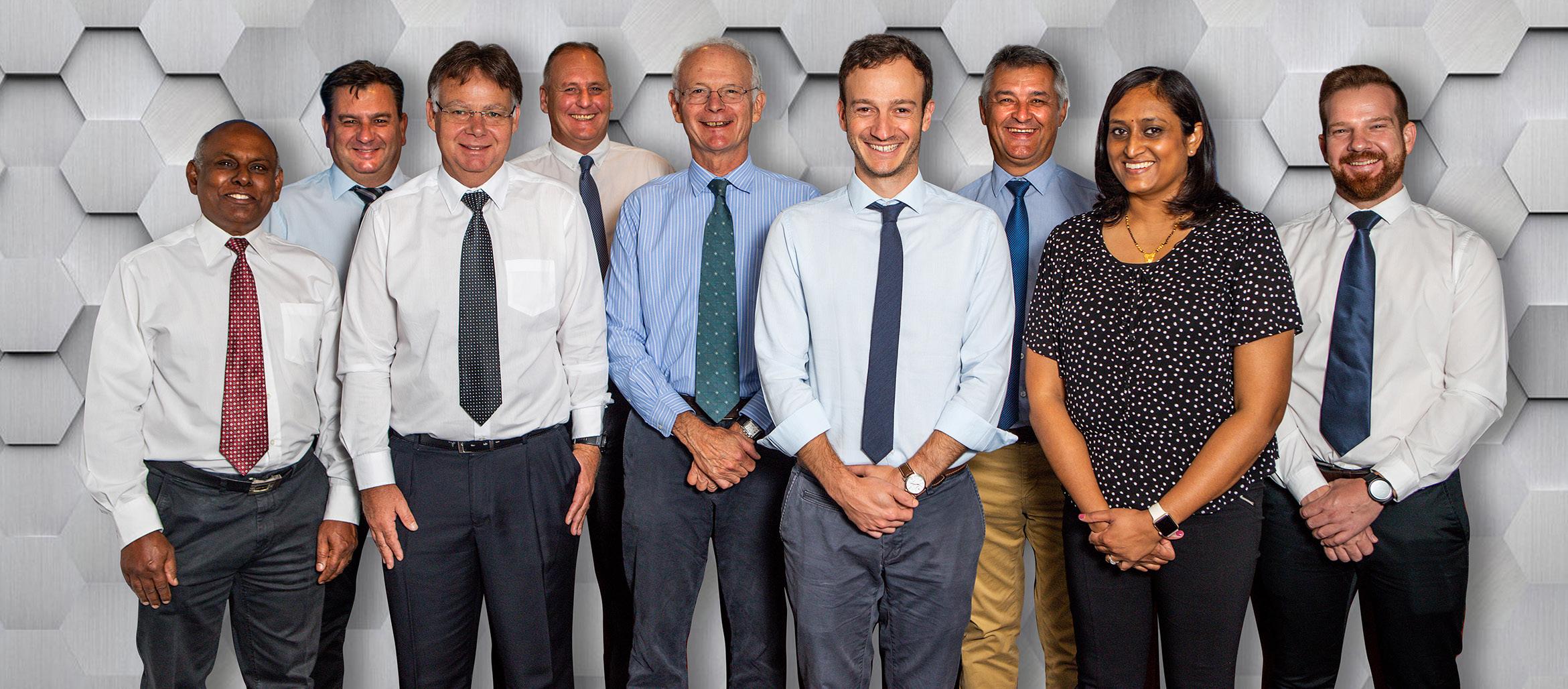
We did this by ensuring that customer relationships remained the backbone of our company and continuing to use technology to support these interpersonal relationships. This was already part and parcel of our business operations but the lockdowns
allowed us to use it to its full potential.
Our company IT infrastructure was already set up in such a way that we were able to carry on our business almost seamlessly from day one of the lockdown. This also allowed us to stay very close to our customers and to gain an understanding of their challenges and needs, thus we were able to assist them in getting the material they required within a highly restricted environment.
Against this backdrop, perhaps the thing that we’re most proud of, is that we did not have to retrench a single person, no salaries were reduced, annual bonuses were paid and we retained our full staff complement.
Why do you feel that stainless steel has such an important role to play in growing South Africa’s economy and which sectors hold the greatest potential to increase the use of stainless steel?
The world will always have a corrosion problem and stainless steel is currently the material of choice to combat that problem.
In addition, because of its superior hygienic qualities, stainless steel is the first choice in the food and beverage industry. This is an industry that is ever
expanding due to the growing population and urban sprawl from rural areas into urban areas.
Another local sector driving demand is the mining industry. I describe it as a ‘sleeping giant’ off the back of the current energy crisis. Why do I say this? Because the ever-expanding green energy sector – whether it’s gas or solar –will have an indirect spin off for the use of stainless steel.
For example, the power storage batteries in solar installations require materials such as nickel, cadmium and vanadium of which we have abundant resources in South Africa. When these materials are taken out of the ground and refined, stainless steel will come into its own in the highly corrosive environments required to process these materials.
Another growing ‘green’ energy product: electric car production, will also have a positive effect on the stainless steel industry as in their production, their batteries require nickel and copper cables. Both of these will be a boost to the mining sector which has a knockon effect for the stainless steel industry, particularly as copper mining and refining is stainless steel intensive.
In addition, as countries and industries switch over to the use of natural gas, stainless steel will also be used more – in both the refining process and in piping.
ISSUE 3 2022 16
What do you consider the most exciting global and/or local innovations/ product developments happening in stainless steel right now?
One of the most exciting areas is the development of fit-for-purpose alloys. These ‘best of both worlds’ specialised alloys from lean duplex to super duplex grades, provide superior corrosion resistance and additional strengths. They are particularly useful in highly corrosive environments and have a real role to play in the mining industry, where highly corrosive water and abrasive conditions require that level of strength and corrosion in one product.
Which key sectors has NDE been a supplier to in the last 12-24 months? Please provide a brief outline of what was supplied and highlight the specific value that stainless steel added to the project?
We’ve been involved in large projects in the food and beverage industry where we have a long-standing good reputation. We have also done work for new breweries that have come online and are expanding quite rapidly.
Stainless steel has dual benefits when used in this application. Initially, stainless steel is used to manufacture the holding tanks for which we supply the flat product. NDE can participate through
the whole factory/plant value chain: from the incoming side of the factory (water etc.), through to tank manufacture and storage; then the transportation of food and beverages through the plant (the process flow side). NDE’s stainless steel product offering meets several industry needs with our stock of hygienic pipes, tubes and fittings, plus complementary products such as stainless steel balustrades, sections, and tubes.
We keep a large range of products on our shelves which allows for dynamic supply to this industry.
What do you see as the biggest challenges facing the local industry in the next 12 months?
Looking at the macroeconomic picture for the next two years, we predict that the economy is going to be fairly flat, and we don’t foresee huge growth in our industry until the country’s current energy issues are resolved.
This is because stainless steel manufacture and fabrication is a very energy-intensive industry
In 2022, NDE celebrates their 70th year in business. The company was initially founded in Johannesburg to service the dairy industry and has since expanded to have branches in all key metros around South Africa, servicing a variety of South Africa’s key industries.
NDE has three branches in Gauteng (Johannesburg, Germiston and Pretoria), as well as the Head Office. In addition, you can find branches in Cape Town, Durban, Gqeberha and Mbombela. Their Exports Division, situated in Germiston, is perfectly positioned to export corrosion-resistant materials into the African continent.

For 70 years, NDE has refined their product offering – expanding from the Hygienic industry into Flat Product, Sections, Pipe, Tube, Fittings and Balustrading. Their relationship with global suppliers ensures that their customers can rely on NDE for a superior quality product, expert advice and fast delivery.
and companies in this sector are simply not going to invest in expanding their factories and building new lines under the current energy supply constraints. The real test will be now to prove that we can continue to thrive despite the country’s economic challenges.
What does NDE have planned for the next year in terms of new product launches or other exciting client or staff initiatives that form a key part of its growth strategy for 2023?
Now that international borders are open again, we see great opportunities on the African continent as we believe that South Africa is the gateway to Africa. We have taken our South Africa learnings over the last two years in terms of our local sector’s evolution amidst the pandemic and are deploying that knowledge across the continent.
In addition, if the past two years have taught us anything, it’s to not lose the human connection with our customers to allow us to create a better value offering and customer experience. For us, this is central to our business ethos. It’s not rocket science. It just requires a commitment to valuable interpersonal relationships and an approach that is always in line with our value system of being an ethically and morally correct company.
Contact NDE via their website: www.nde.co.za
Solution for you!”
ISSUE3 2022 17
“We look forward to finding an NDE

webinar report back
HOW TO MAINTAIN & PROTECT STAINLESS STEEL’S MAGICAL PASSIVE LAYER
Sassda has hosted a range of 60Minutes with Stainless webinars this year with great success. One of the most popular focused on stainless steel’s almost magical and highly protective passive layer that gives it the ability to ‘fight’ off a range of threats to the superior corrosion resistance of the material. However, the passive layer is constantly bombarded by external factors and it also comes under acute pressure during fabrication when the integrity of the passive layer is pushed to the max. Read on to gain a full overview of the information discussed during the webinar and discover why and when chemical restoration is important for the passive layer…

A stainless steel surface should appear clean, smooth and faultless. This is obvious when the steel is used for such purposes as façades or in applications with stringent hygienic requirements, but a fine surface finish is also crucial to corrosion resistance.
Stainless steel is protected from corrosion by a thin,
impervious, invisible surface layer -the passive layer - that consists mainly of chromium oxide. The oxygen content of the atmosphere or aerated aqueous solutions is normally sufficient to create and maintain this passive layer.
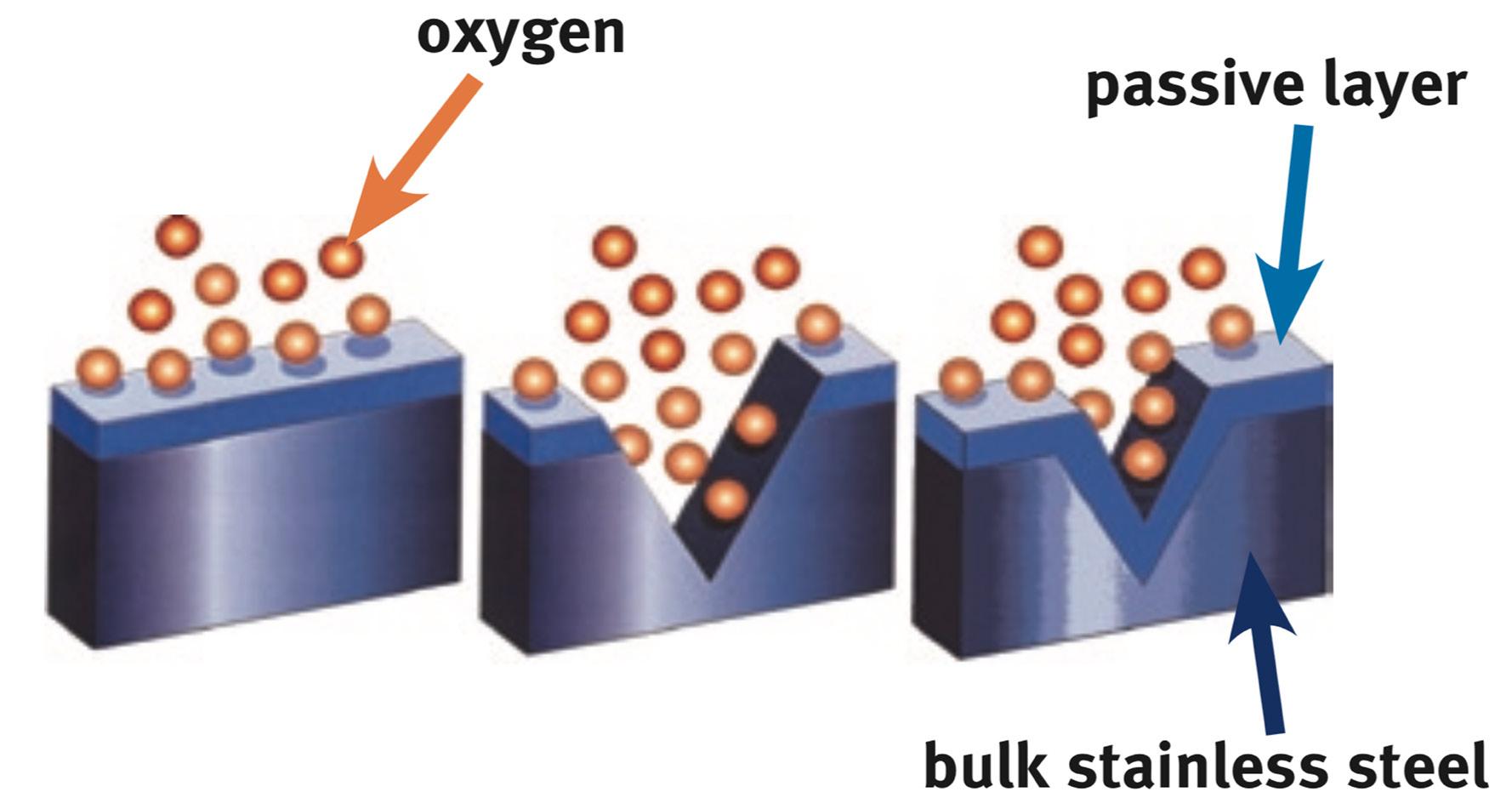
Unfortunately, surface defects and imperfections introduced during manufacturing operations
may drastically disturb this ‘selfhealing’ process and reduce resistance to several types of local corrosion. This means that a final cleaning process will often be required to restore an acceptable surface for hygiene and corrosion considerations.
The extent of, and methods for, post-manufacture treatment will
ISSUE 3 2022 19
be determined by the corrosivity of the environment, the corrosion resistance of the steel grade, hygienic requirements (e.g., in the pharmaceutical and food industries), or purely aesthetic considerations.
Consideration must also be paid to local environmental requirements. Both chemical and mechanical cleaning methods are available. Good design, planning and methods of manufacture can reduce the need for finishing work and thus reduce costs. The influence of defects and ultimately their removal must be considered when manufacturing to specifications that relate to certain surface quality requirements.
The typical defects that will be removed by mechanical or chemical treatment would include:
• Heat tint and oxide scaleHigh temperature oxidation caused by processes such as heat treatment or welding produces an oxide layer with inferior protective properties, compared with those of the original passive layer. A corresponding chromium depletion in the metal, immediately below the oxide also occurs. The chromiumdepleted zone under normal
welding heat tint is very thin and can normally be removed together with the tint. It is, however, necessary to remove this layer to completely restore corrosion resistance.

• Weld defects - Incomplete penetration, undercut, pores, slag inclusions, weld spatter and arc strikes are typical examples of weld defects. These defects have negative effects on mechanical properties and resistance to local corrosion and make it difficult to maintain a clean surface. The defects must therefore be removed, normally by grinding, although sometimes repair welding is also necessary.
• Iron contamination - Iron particles can originate from machining, cold forming and cutting tools, blasting grits/sand, or grinding discs contaminated with lower alloyed material, transport or handling in mixed manufacture or simply from iron-containing dust. These particles corrode in humid air and damage the passive layer. Larger particles may also cause crevices. Reduced corrosion resistance will result in both cases. This
type of corrosion produces unsightly discolouration and may also contaminate the media used in the equipment in question.
• Rough surface - Uneven weld beads and grinding or blasting too heavily will result in rough surfaces. A rough surface collects deposits more easily, thereby increasing the risk of both corrosion and product contamination. Heavy grinding also introduces high tensile stresses, which increases the risk of stress corrosion cracking and pitting corrosion. There is a maximum allowed surface roughness (Ra-value) for many applications and manufacturing methods that result in rough surfaces should generally be avoided.
• Organic contaminationOrganic contaminants in the form of grease, oil, paint, footprints, glue residues and dirt can cause crevice corrosion in aggressive environments. This renders surface pickling activities ineffective and pollutes products handled in the equipment. Organic contaminants should be removed using a suitable precleaning/degreasing agent (chlorine-free). In simple cases, a high-pressure water jet can be used.
Different chemical and mechanical methods, and in certain instances a combination of both, can be used to remove the defects mentioned. Generally, cleaning based on chemical methods can be expected to produce superior results since most effective mechanical methods tend to produce a rougher surface while chemical cleaning methods reduce the risk of surface contamination. However, local regulations relating to environmental and industrial safety as well as waste disposal problems may limit their application.
ISSUE 3 2022 20
Mechanical methods will include:
• Grinding - Grinding is normally the only method that can be used to remove defects and deep scratches. A grinding disc is usually adequate for treating defects of this type. The grinding methods used should never be rougher than necessary and a flapper wheel is often sufficient for removing weld tint or surface contamination.
• Blasting - Sand and grit blasting (peening) can be used to remove high temperature oxide as well as iron contamination. However, care must be taken to ensure that the sand (preferably of olivine type) or grit is perfectly clean. The blasting material must therefore not have been used for carbon steel, nor should the sand or grit be too old, as it becomes increasingly polluted, even if it is only used for blasting contaminated stainless steel surfaces. Surface roughness is the limiting factor for these methods.
• Brushing - For the removal of heat tint, brushing using stainless steel or nylon brushes usually provides a satisfactory result. These methods do not cause any serious roughening of the surface, but also don’t guarantee the complete removal of the chromiumdepleted zone. With other mechanical methods, the risk of contamination is high and it is therefore important that clean tools that have not been used for processing carbon steels are used.
Chemical methods can remove high temperature oxide and iron contamination without damaging the surface finish. Electropolishing may also improve the surface finish. Since they remove the surface layer by controlled corrosion, chemicals will also
selectively remove the least corrosion-resistant areas such as the chromium-depleted zones. Chemical methods would include:
Passivation and decontamination -
This procedure is similar to pickling, but in this case, the active agent is nitric acid only. The acid is applied by immersion or spraying. This treatment strengthens the passive layer. The treatment is more important after mechanical cleaning and operations involving a risk of iron contamination since the acid also removes iron impurities from the surface.
Electropolishing -
• Electropolishing normally produces a surface that guarantees optimal corrosion resistance. The material gains a fine lustre, and, above all an even microprofile that meets extremely stringent hygienic requirements.
• Pickling - Pickling is the most common chemical procedure used to remove oxides and iron contamination. Thorough rinsing with clean tap water must follow pickling. A final pickling/ cleaning operation following a typical manufacturing programme may include:
- Grinding for removal of defects caused by welding as slag must be removed after welding
Organic contaminants should be removed using a suitable precleaning/degreasing agent (chlorine-free). In simple cases, a high-pressure water jet can be used.
Pickling using a bath, paste or solution, possibly in combination with a careful mechanical treatment to break oxides.
A thorough rinsing with water, preferably using a high-pressure water jet.
This method could also be referred to as decontamination given that after every acid treatment, rinsing with water is vital. After certain types of production processes, passivation/decontamination may suffice as a cleaning method. This method is also strongly recommended after mechanical treatment as well as after pickling in special cases.
The choice of method and the extent of final cleaning required will depend on the need for corrosion resistance, hygienic considerations (pharmaceuticals, food) or whether visual appearance is the sole criterion.
The routine removal of welding defects, welding oxides, organic substances and iron contaminants is normally a basic requirement and usually allows a comparatively free choice of final treatment. Provided that the surface roughness permits, mechanical and chemical methods can be used. However, if an entirely mechanical cleaning method is considered, the manufacturing stage has to be well planned. This is to avoid iron contamination, since decontamination, probably with nitric acid, will otherwise be necessary. When requirements for surface finish and corrosion resistance are exacting, the choice of method is more critical. A treatment sequence based on pickling will in such cases provide the best chances of a superior result.
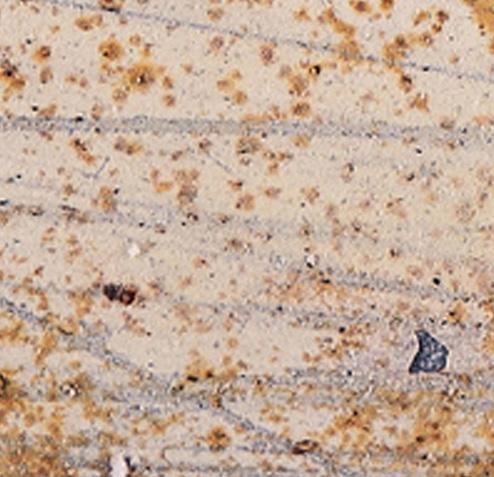
ISSUE 3 2022 21

case study
AIR CRASH INVESTIGATION
The tragic consequences of misunderstanding stainless steel
Stainless steel is known for its incredible ability to resist corrosion. However, a skewed focus on a singular aspect of material selection and a lack of understanding of the correct grades of material required for high-stress environments can lead to tragic consequences…
On the 9th of August 2007, one of the shortest flights in the world ended in disaster when a de Havilland Canada DHC-6 Twin Otter from Air Moorea suddenly plunged into the Pacific Ocean, killing all 20 people on board.

The crash on French Polynesia’s most popular tourist route sparked a year-long investigation that ultimately uncovered multiple threats affecting not just the Twin Otter, but every small plane operating out of a major airport.
Air Moorea was a small air carrier based on the island of Moorea in French Polynesia. It specialised in short commuter flights between the scattered islands of the archipelago using its fleet of four de Havilland Canada DHC-6 Twin Otter propeller planes, which could carry 19 passengers and one pilot.
Flight 1121 was Air Moorea’s busiest route, from Moorea to Faa’a on the neighbouring island of Tahiti. This flight lasted just seven minutes and Air Moorea flew it more than 40 times per day.

The Twin Otter has fully
manual flight controls that are directly connected to the pilot’s yoke via steel cables. The Twin Otter operating this flight had been acquired separately from Air Moorea’s other three aircraft, and there was a small, seemingly insignificant difference between them.
Whereas the other Twin Otters had carbon steel control cables,
this Twin Otter had stainless steel control cables. According to the manufacturer, both types were to be treated identically. As a result, Air Moorea had no idea that this plane was any different.
A TRAGIC TRADE OFF
The original reason for using stainless steel was that it suffered
ISSUE 3 2022 23
It is highly likely that the Twin Otter with the badly worn elevator cable was struck by just such a blast that night. The jet blast placed enormous strain on the elevator, which transferred the stress to the cable. However, the cable could not move to alleviate the stress because it was held in place by the gust lock - a device that prevents wind from moving the elevators while the plane is
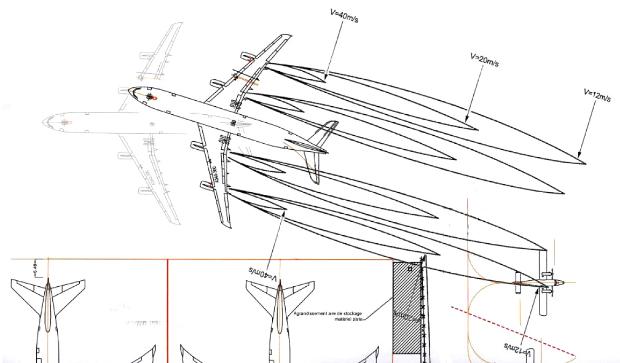
Binocular view of the wear area on a stainless steel cable after 150,000 cycles

AN UNFORTUNATE COINCIDENCE
Binocular view of the wear area on a carbon steel cable after 150,000 cycles

much less corrosion than carbon steel. But there was a trade-off. The stainless steel cables suffered more frictional wear than the carbon steel ones. Every time a pilot moved the control surfaces, the cables rubbed against various pulleys and guide holes, causing them to wear down over time.
The particular cables of interest in this incident were the elevator cables. The Twin Otter elevator control system consisted of a “pitch up” cable and a “pitch down” cable which formed a closed loop, allowing the elevators to move up or down when the appropriate cable was in tension. On the Air Moorea Twin Otter
The night before Flight 1121, the Twin Otter was parked at PapeeteFaa’a International Airport. The berth where Air Moorea stored its Twin Otters, was located close to a gate used by Air France’s body Airbus A340s. When jet engines spool up, they bombard everything behind them with a powerful burst of wind called a jet blast. As it turned out, if an A340 pushed back slightly too far from this gate, the planes parked in the outermost berth could be struck by its jet blast, subjecting them to winds of up to 162kph.
A normal cable would not be seriously damaged by such a blast, but in this case, the severely worn cable had a reduced ability to withstand the strain, and several strands snapped in the worn area. The elevator pitch-up cable was left with just one of its seven original strands intact.
UNSEEN DAMAGE
That last strand was enough for the elevators to continue functioning until shortly before noon the next day when the Twin Otter took on 19 passengers for Flight 1121 from Moorea back to Tahiti.
Before take-off, the pilot performed the standard elevator checks, and the elevators functioned normally. Flight 1121 was cleared for take-off and took to the sky shortly after midday.
ISSUE 3 2022 24
failure of the pitch-up control cable (scale1:1)

About halfway to the flight’s cruising altitude of 600 feet, the pilot retracted the flaps, which increase lift on take-off and landing.
The tendency of the Twin Otter with the flaps retracted was to pitch down, so when he retracted the flaps, the pilot naturally pulled up with the elevators to continue climbing. This was the largest force applied to the critically damaged elevator pitch-up cable that day, and it proved incapable of handling the stress. The pitchup cable snapped, causing the aeroplane to succumb to its natural desire to pitch down.
Just eleven seconds after the cable broke, Air Moorea Flight 1121 plunged nose-first into the channel between Moorea and Tahiti, destroying the aircraft and instantly killing all 20 people on board. The wreckage came to rest on a steep underwater slope 700 meters below the surface, and a specialised search vessel had to recover the plane.
It was not until several weeks after the crash that investigators finally saw the elevator cables and noticed the damage. Even then, the full story was far from obvious. Tests showed that the wear on the cable was by itself insufficient to cause its failure. Without the coincidental jet blast encounter, the cable would likely have lasted until the next inspection, at which point it would have been replaced.
A FATAL LACK OF UNDERSTANDING
The investigators also found numerous points at which the accident could have been prevented. For example, the parking area at Faa’a previously had a fence to protect parked planes from the jet blast effect, but it had been taken down in 2004 to make way for a new taxiway. Most importantly, the lack of separate guidance from the manufacturer regarding stainless steel control cables represented a blatant safety deficiency. The original manufacturer, de Havilland Canada, had long since given up the aircraft’s production rights to Canadian aircraft producer Viking Air. Unfortunately, Viking Air had not conducted any wear rate tests on stainless steel cables, apparently assuming that the existing replacement interval would be sufficient.
Air Moorea regularly inspected its control cables too, but because the damage to the elevator pitchup cable was in a location that was difficult to see, it was not discovered in time. It was clear that a system based on finding and replacing damaged cables during routine inspections was insufficient, and that a shorter mandatory replacement interval was necessary. If Air Moorea had replaced its stainless steel cables
on this Twin Otter at the same interval as airlines that knew about the problem, the crash would never have happened.
A PREVENTABLE CRASH
A final tragic element to the story was that, had the pilot known what he was facing, he could have saved the plane. Live tests in a real Twin Otter showed that if the pilot had used the stabiliser trim to pitch the plane up within three seconds of the failure, Flight 1121 would have recovered before hitting the water. But it was unreasonable to expect him to be able to act so quickly, especially considering that he had not been trained on how to react to failures of the primary flight controls.
After narrowing down the cause, the French Bureau of Enquiry and Analysis for Civil Aviation Safety learned of similar wear on other Twin Otters with stainless steel control cables and issued an urgent recommendation to Transport Canada and the European Aviation Safety Agency calling for inspections of all such cables.
In its final report, the BEA took this one step further, recommending that stainless steel control cables be banned on the Twin Otter until research into wear was performed and new maintenance guidelines were created.
It also called for studies of other aircraft with stainless steel control cables to see if they too could be vulnerable. They also recommended that the French Directorate General for Civil Aviation encourages communication between airlines and manufacturers regarding recurring maintenance issues and that airports be informed of the risks of jet blasts to parked aircraft.
**Pictures courtesy of https://admiralcloudberg. medium.com/the-crash-of-air-moorea-flight-1121analysis-4cbc6ea283d3
ISSUE 3 2022 25
Aft
It’s one of the most corrosive environments imaginable, only one material can tough it out



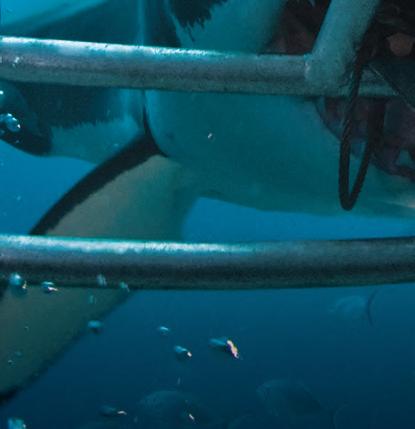
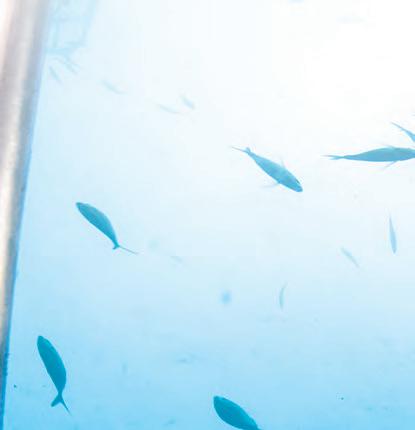
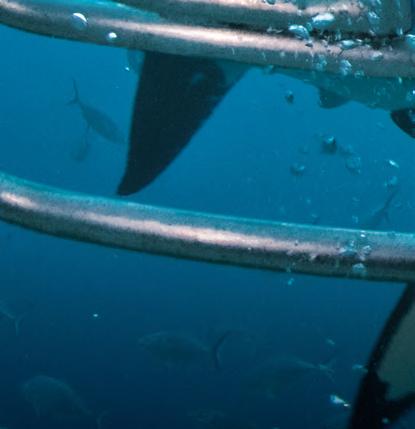

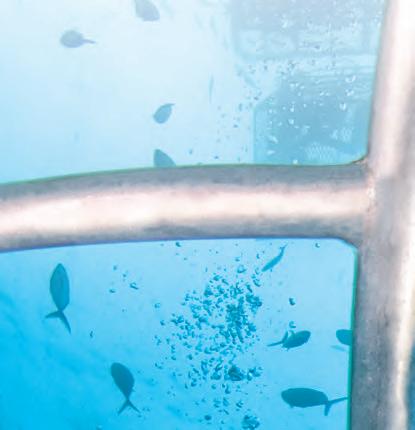

With stainless steel’s strength, versatility and over 200 grades, these are some of the reasons we call it the only man-made noble metal.
Stainless Steel. It’s Simply Brilliant.
Call 011 883 0119 or see sassda.co.za. Your complete stainless information source.

MSC 1611-001
Image courtesy of www.72andrising.com
professional profile
ENERGY AND ENTHUSIASM SEIZE THE DAY!
Metal Connection founder Pauline Arde is a passionate professional who has risen to the challenge of being a woman in a traditionally male dominated industry. Thanks to her fearless approach and deep understanding of the industry her company has not only survived but thrived in the last two years…
Why do you think you have been able to succeed in our industry and what are the key strengths that have allowed you to achieve success?
Women who are driven and ambitious are unstoppable in any profession they decide to pursue. The reason I rose to prominence wasn’t that I was terrified, rather, it was because I persisted despite my fears.
Being a female leader in the scrap steel industry has been challenging but well worth it in the end. It’s also one of the reasons that led me to study for a Bachelor of Management as I realised early on that I needed to be a leader to my staff members and someone they could look up to.
Being in a completely male dominant industry for the last couple of years, it was very important for me as a strong female to learn and adapt to the

industry, as well as my male staff, to respect and look up to me as a role model and a leader.
How did the first years of your career build on what you learnt during your studies, but in a more practical setting? What were the key lessons you learnt during this time?
I started my career building and supplying scrap dealers with scrap bins to transport all types of scrap. Well, after that I was sold on the scrap industry, as it amazed and intrigued me so much, that all I wanted to do is learn and enhance my knowledge of the industry itself.
I am currently the sole owner of a very successful scrap recycling empire and have been for the

ISSUE 3 2022 27
last five years. Metal Connection has grown and become one of the biggest suppliers to all our local foundries for their scrap requirements.
How would you describe a typical day in your current position?
A motto of mine is, ‘When you have discipline you will always have self-control’. A typical day therefore starts with my management team and myself planning our deliveries, collections, and pricing and discussing where and what we can further improve for us to keep up with all the constant changes in the industry. I find input from my staff plays a big role in the strategic decisions made in the company, as we strive to work together as a team.
One of the most difficult challenges I had to face when starting in this industry was to gain respect and acknowledgement in such a male-dominated industry as, unfortunately, this industry has had a stigma around it for so many years as a ‘man’s industry’. However, after perseverance and growing daily, I am proud to say that stigma has slowly shifted.
Why do you feel that stainless steel has such an important role to play in getting South Africa’s economy back on track following the COVID-19 pandemic?
COVID-19 had a major impact on the industry and affected every single sector of the economy, causing shortages of materials, losses in jobs and major losses in the production sector which in

turn affected the scrap industry with massive shortages.
What do you consider as the most exciting innovations/product developments happening in stainless steel right now and what sectors hold the greatest potential for the use of stainless steel in the future, e.g., aerospace?
Stainless steel is a very durable, versatile material that can withstand harsh environments and has been used for many years in the manufacturing of many advanced machinery and equipment. However, stainless steel has also had to adapt to different operating methods. This has been a big advantage for the industry as this change caused a rise in demand for stainless steel given its superior sustainability and ‘green’ credentials.
africa focus

HOME TO THE BLUEST MINERALS AND ABUNDANT BLUE SKY POTENTIAL
Tanzania is awash with potential thanks to its wealth of natural resources and burgeoning middle class that is driving consumption and growth within its economy. Against this backdrop, the top three sectors that have the greatest potential in Tanzania are ICT, Infrastructure, and Agribusiness.

The government has also invested heavily in infrastructure projects such as railways, roads, and airports. Agriculture continues to be the major economic activity among most Tanzanians and employs more than 70% of the population. With the growing middle class in the country, there is also increasing demand for consumer products.
Mining is another leading industrial sector in Tanzania with the value of mineral exports increasing for the past several years. The sector consists of small- and large-scale operations. Mining in Tanzania includes metals (gold, iron ore, nickel, copper, cobalt, silver), industrial minerals (diamonds, tanzanite, ruby, garnet, limestone, soda ash, gypsum, salt, phosphate, gravel, sand, dimension stones and graphite), and fuel minerals (coal, uranium).
Tanzania earned around $2.3-Billion in minerals exports in 2019, a significant increase over the 2018 level of $1.6-Billion. Gold had the highest contribution to the
value of mineral exports. Tanzania is the fourth largest gold producer in Africa after South Africa, Ghana and Mali and is the world’s sole producer of the precious stone tanzanite. Gold production currently stands at roughly 40 t a year, copper at 2 980 t, silver at 10 t and diamond at 112 670 carats.
Mining and quarrying activities made a large contribution to Tanzania’s Gross Domestic Product (GDP) growth in the first quarter of 2021. The sector recorded 10.2% of the GDP.
The Tanzania mining industry remains attractive to investors, given the next few years of significant diversification in the
ISSUE 3 2022 29
Sassda Market Intelligence Specialist Lesley Squires provides an update on Tanzania, a country famed for its tanzanite deposits and is also home to many rare earth and critical minerals that are currently in the exploration stage…
mining of nickel, uranium, and coal. There is also an availability of investment incentives and supply chain opportunities in the mining sector.
MINING LAWS ABOUND
There have been a number of legislative changes to the mining industry in the country. According to the Petroleum Act of 2015 and the Mining Act of 2010, license holders and contractors in the extractive sector are liable to pay taxes, including corporate tax (30%), capital gain tax (30%), withholding tax (10%), and other taxes.
Profits resulting from the transfer or disposal of rights are also subject to taxes, which are collected by the Tanzania Revenue Authority. In June 2017, the Tanzanian government passed laws with significant implications for extractive sector governance in the country (including the Natural Wealth and Resources Contracts Bill, the Natural Wealth and Resources Bill, and the Written Laws Act).
One of the most significant implications of the bills is that they empower the national assembly to allow the government to renegotiate any agreement considered inequitable and containing “unconscionable terms”. Other provisions entitle the government to stakes of at least 16% in mining companies operating in the country, with the option to acquire up to 50%.
The Tanzania Extractive Industries Transparency and Accountability Act 2015 has provisions for all new concessions, contracts and licenses to be made available to the public. (FYI All the major pieces of legislation governing the industry today can be found on the website for Tanzania Chambers of Mines: https://www.miasa.org. za/members/tanzania-chamber-ofmines
A MERGING OF THE MINDS
As a result of these amendments a joint venture company known
as Twiga Minerals Corporation Limited has been established between the Government (16%) and Barrick Gold Corporation Company (84%); and the payment of compensation of $100 -Million from Barrick Gold Corporation Company as initial settlement of the agreed $300-Million.
The government of Tanzania would also like to see more value-added activities in the country, including smelting and processing of minerals. As of 2020, two model gold smelters were built in Lwamgasa and Katente, a onestop mineral processing and export centre.
This has resulted in a strengthening of mineral controls and a reduction of smuggling due to the construction of a 24.5km wall around the Mirerani tanzanite mine. An additional 28 markets and 25 mineral centres have been established.
In recent years, mineral exploration has increased in several parts of the country. The sector has attracted substantial new foreign investment in mineral development exploration, with local investment surpassing $1-Billion. Recent nickel, helium, graphite, uranium, and coal finds have spurred increased interest on the part of investors.
THE BIGGER PICTURE
Tanzania’s GDP grew to 4.9% in 2021 up from 4.8% in 2020, supported by the global economic recovery. Growth was driven by agriculture and services on the supply side and final consumption and investment on the demand side. Monetary policy remained tight, which stabilised inflation at 3.3% in 2020 and 3.7% in 2021.
The Tanzanian shilling remained stable in 2020-21, depreciating by only 0.2% against the US dollar. The ratio of NPLs to gross loans fell to 9.4% in March 2021 from 11% in March 2020 but was still above the statutory requirement of 5%.
The fiscal deficit increased to 3.4% of GDP in 2021 from 0.8%
in 2020 due to weak revenue performance and growing financial needs. These were fed by the impacts of COVID-19 and subsequent external and domestic borrowing.
SUB-SECTOR PROSPECTS
The mining sector depends on imported machinery and supplies, and investors can import capital goods at zero duty. There are significant opportunities for the export of technology, machinery, and services. Mining companies have significant demand for better power alternatives as they currently rely on diesel generators.
The Tanzanian Government encourages mining companies to procure local goods and services whenever possible, and many of the foreign mining executives would like to increase local consumption to support the Tanzanian economy. There is a significant opportunity to supply foodstuffs, clean water, training, consultancy, and other services. With an unreliable power grid and rail system, alternative energy and transport solutions are also in high demand.
OPPORTUNITIES ABOUND
• Establishment of gold refinery activities
• Supply equipment and explosives, grinding media, mill liners, etc., under a joint venture with Tanzanian entrepreneurs
• Establishment of value-added activities
• Gemstone cutting and polishing (lapidary). In 2010, the Government passed new legislation banning the export of unprocessed gemstones in a bid to spur local beneficiation
• Rock and mineral carvings
• Jewellery manufacturing, utilising gold, and gemstones
• Mineral processing industry e.g., smelters
• New areas in mineral exploration
ISSUE 3 2022 30
member insight
SAY YES4YOUTH AND TAP INTO INNOVATIVE NEW EMPLOYMENT INITIATIVE
Sassda recently held a meeting with YES4Youth to explore opportunities and mutual benefits that may exist for members who want to make use of this service. The Youth Employment Service (YES) is a private sector-led initiative that addresses the country’s youth unemployment crisis by empowering businesses to create jobs for unemployed youth.
In terms of why this initiative is of importance to Sassda members, YES is a South African business driven not-for-profit that works in partnership with companies, labour and government to tackle youth unemployment in South Africa by creating 12-month quality work experiences (QWEs) to unemployed youth through the private sector.

Since its inception three and a half years ago, more than 2 200 companies have signed on with YES and its corporate partners have created more than 90 300

jobs. Sassda members can join the movement of over 2 200 companies who not only create opportunities for unemployed youth and build a talent pipeline for their business but also receive a B-BBEE level up or alignment with Environmental, Social and Governance (ESG) strategy for their investment.
In terms of how YES works with companies to link them up with the right people for the right jobs, companies have two models of participating in the YES program, namely the internal placement model and the implementation
partner model. The two models work as follows:
INTERNAL PLACEMENT:
Unemployed youth are recruited and managed for the 12-month work experience by the sponsor company. This includes recruiting the youth (as per standard company recruitment models), providing the youth with a 12-month quality work experience opportunity, paying the youth each month, ensuring that both youth and supervisors
ISSUE 3 2022 31
complete their respective surveys and modules, and achieving absorption requirements.
IMPLEMENTATION PARTNER MODEL (TURNKEY SOLUTION):
This model is also referred to as the turnkey solution. In this model, youth are recruited and managed for the 12-month work experience by a vetted YES partner. Many of these partners are NPOs or SMMEs who work to uplift youth while building communities by placing youth into under-capacitated sectors. This model ensures that companies can integrate YES into the ESG or SDG strategies. https://yes4youth.co.za/yesturnkey-solution/
Looking ahead, core plans to grow the offering in 2023 include:
• Additional IPs across sectors including green energy, agriculture and agricultural processing, and artisanal skills –all of which are linked to SASSA
• Improved monitoring and evaluation through youth nudges, app engagement, call centre engagement
• Possibly a mental health app to support youth throughout their journey.
KEY STATS
•Youth jobs to date: 91 000+
•Company level-ups achieved: 915+
•Economic injection into the economy through YES4Youth salaries: R4.9-Billion
•Don’t forget to follow this worthwhile initiative on the following social media handles:
LinkedIn: https://www.linkedin.com/company/28156481/admin/ Twitter: https://twitter.com/Yes4YouthZA
Facebook: https://www.facebook.com/Yes4YouthZA
Click here to read more about the real-life YES4Youth success stories and how these could apply to your business

TESTING THE PASSIVE LAYER
Testing the passive layer: One Eighty Material Testing (Pty) Ltd developed a Ferroxyl Test Kit in accordance with ASTM A380. The kit is an easy-to-use self-testing apparatus made for both commercial and industrial applications utilizing stainless[1]steel. With the Test Kit, one can ascertain whether the passive oxide layer of stainless steel is intact or if it has been compromised which can result in various degrees of corrosive attack if not addressed. The test can detect multiple sources of iron contamination which is a hazard in the pharmaceutical-, food and beverage-, and medical industries, to name a few. The outcome of the test will provide the user with a visible indicator to the degree of potential iron contamination on the tested surface and inform planning strategies on how to mitigate the associated risk factors.

ISSUE 3 2022 32
CLICK HERE
training focus
SASSDA SCORES TOP MARKS IN THE CLASSROOM IN 2022!

Sassda has delivered on this industry demand in record breaking fashion during 2022, having registered more students in all its courses than in its 60 years of existence. For example, the Advanced Stainless Steel course previously showed an average attendance of around 12 students per course, whereas the same
course in October 2022, attracted 30 students with an especially high turnout of professional engineers and senior decision makers.
The increased support for the courses Sassda offers stem from the fact that the world class standard of Sassda training is now widely recognised - whether they

are introductory courses, technical courses, workshops, or webinars. It’s also due to a revision of the content of all courses which are now officially approved by selected engineering institutes.
To gain a full overview of Sassda’s training initiatives, take a look at the various courses Sassda currently offers:
ISSUE 3 2022 33
An integral part of the Sassda mandate is to ensure accessible, affordable, accredited and quality training that will add value to its members and the broader South African stainless steel industry
1.INTRODUCTION TO STAINLESS STEEL
This course is a self-paced, convenient, and easily accessible e-learning programme offering a basic understanding of stainless steel. The target audience is entry-level and non-technical personnel involved with activities in an organisation who directly or indirectly liaise or interface with customers or are in contact with stainless steel. These include administrators, buyers, procurement, marketing, sales, and warehouse personnel.
After attending the course, the learner will have covered:
• The history of stainless steel
• What Sassda is and its key role
• A basic understanding of what stainless steel is as well as the different grades of the material and their uses
• Understand why stainless steel is specified (benefits)
• Understand the basic properties of stainless steel
• Understand how stainless steel is produced
• Know how to handle and maintain stainless steel
2. FUNDAMENTALS OF STAINLESS STEEL COURSE
This is an intermediary course aimed at people who have acquired a basic understanding of stainless steel through workplace experience and/or from completing the Introduction to Stainless Steel e-learning course. The target audience would include newcomers to the industry, as well as persons requiring more indepth knowledge of stainless steel, such as salespersons, supervisors, managers, specifiers, and end users.
3.ADVANCED STAINLESS STEEL COURSE
This is an intensive course for people who require an advanced
understanding of stainless steel and have completed the Fundamentals of Stainless Steel course. The targeted audience is any person requiring in-depth knowledge of stainless steel such as salespersons, sales managers, specifiers, engineers, workshop managers, and end users. The course includes a 1-day mill visit to Columbus Stainless.
4.HANDLING AND FABRICATION OF STAINLESS STEEL COURSE
This course introduces employees to stainless steel’s best practices in the workshop and warehouse when handling, storing, fabricating, and working with stainless steel. The target audience
would include persons exposed to, and working with stainless steel, such as shop floor staff, artisans, and operators.
5. HANDLING OF STAINLESS STEEL IN THE WAREHOUSE
This course introduces employees to stainless steel’s best practices in the workshop and warehouse when handling and storing stainless steel. The target audience would include persons exposed to, and working with, stainless steel such as warehouse and shop floor staff, forklift drivers, and packers.
Remember! Most of our products have the flexibility to be offered online or can still be offered in person within the correct and safe environment.
For more information on any of these courses or if there is a special requirement, please contact Sassda’s Training Manager Mankabe More at mankabe@sassda.co.za

ISSUE 3 2022 34
Sassda has broken training records in 2022 having registered more students for its courses this year than in its 60 years of existence!
obituary
Farewell to an industry stalwart
In July 2022, Vaughan Davis passed away in KwaZulu Natal. For most of his working career Vaughan had been associated with or been a member of Sassda.
Vaughan Davis was born in Germiston on 28 April 1950. His parents were both academics and moved from Germiston to Potchefstroom before finally settling in Durban. His love for sports flourished as a scholar and he excelled in rugby, tennis, athletics and soccer and broke several records in track athletics. He finished his school career as head boy of Queensburgh High School.
“My memory of Vaughan was how positive a person he was. He had good relationships with customers and suppliers which assisted NDE in developing our presence in the stainless steel market, particularly in KZN”
–Mike Campbell, NDE
His love for sports continued, seeing him become a professional soccer player for Durban Celtics. Whilst playing soccer he started at Jackson’s Metals at the tender age of 19 and entered his long career in the stainless steel industry.
After some time with Jacksons in Durban, he opted to go to Johannesburg, eventually ending up as a director of the company. In the mid-eighties his home, Durban called, and he moved back and lived there until 1989.
He then relocated to the UK for a couple of years, but in 1994 he moved back to South Africa starting at NDE to run their Durban operations as branch
manager, specialising in the sugar and pulp & paper industries.

He was made director and eventually became a shareholder of NDE.
In 2009 he left NDE to join Sino Metals along with Grant Port and John Gawn who he had previously employed in the industry. When Grindrod stopped funding Sino and it eventually failed he explored various routes within the industry.
He went to India for an interview to represent Viraj
“During my tenure as Sassda’s MD, I had the opportunity to meet Vaughan and benefit from his extensive knowledge of our industry. We shall surely miss his input and wise counsel.
I extend my condolences to Vaughan’s family.”
Michael Campbell
Profiles Limited in South Africa as their sales manager.
Vaughan leaves behind two daughters, a son and five grandchildren.
He was well known for his generosity of knowledge, especially during his time at Sassda. Through the years within this industry, he taught so many different people from all walks of life the game of stainless steel stocking and distributing. We have lost a legend within this industry; he will be sorely missed.

ISSUE 3 2022 35
member focus

GAUTENG
If the 2022 Sassda Gauteng Golf Day showed anything, it’s that the stainless steel industry is craving human connection, whether it’s in the office or on the golf course.



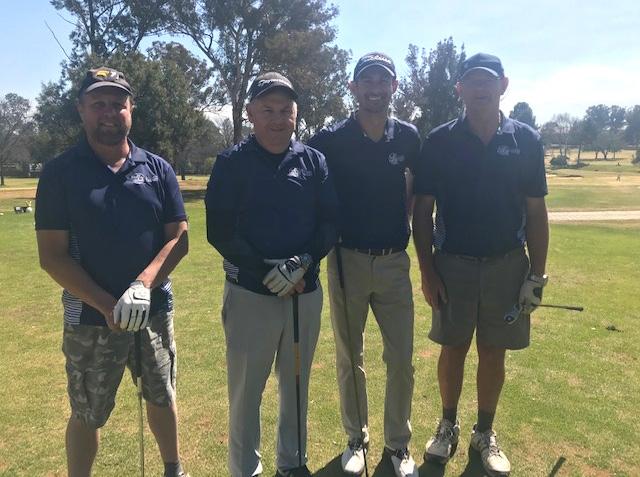
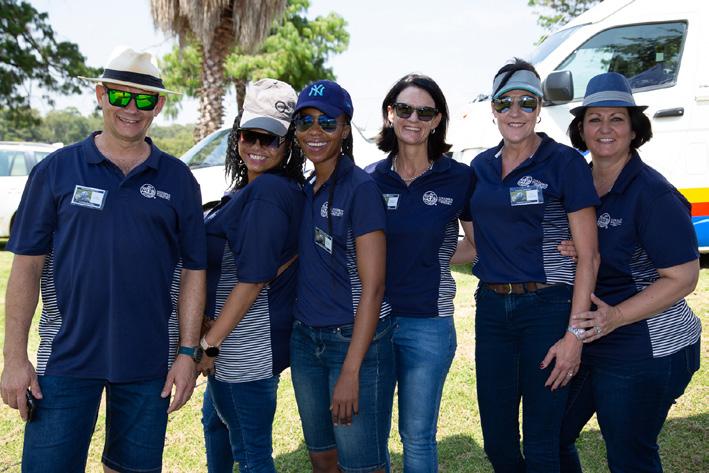
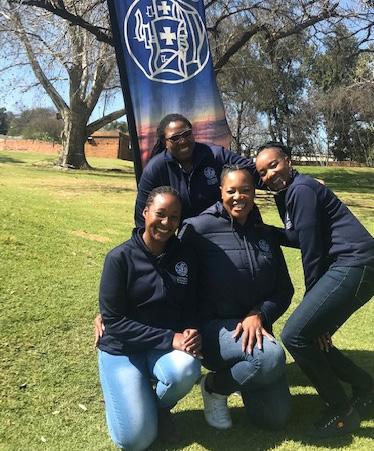

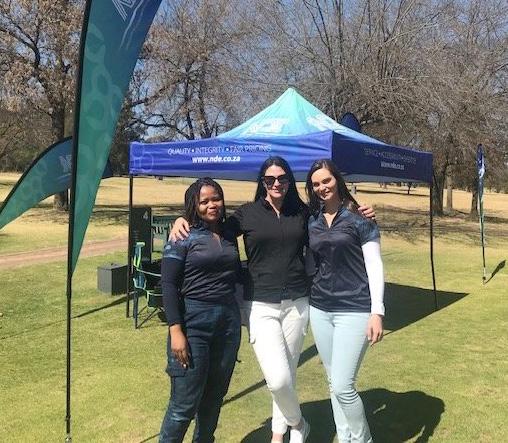
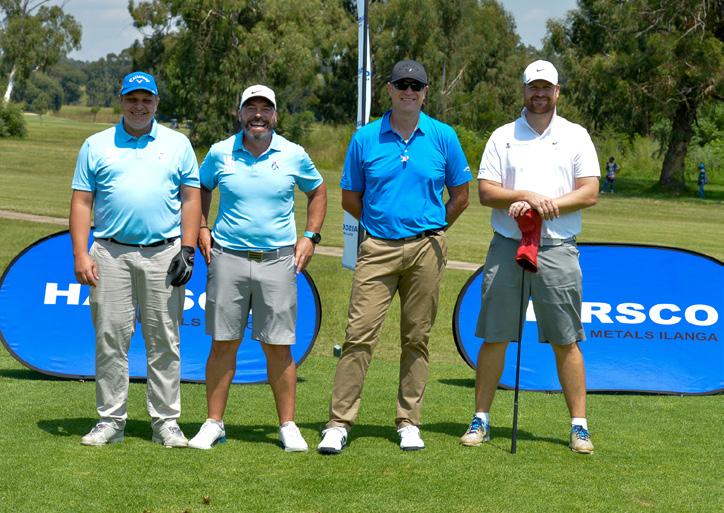
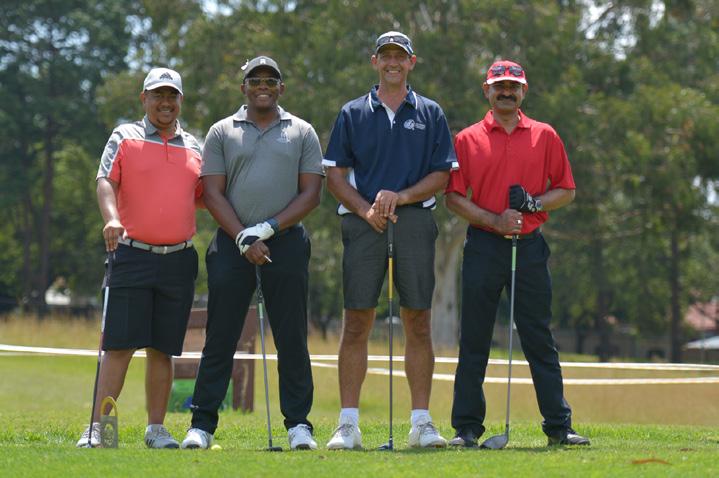
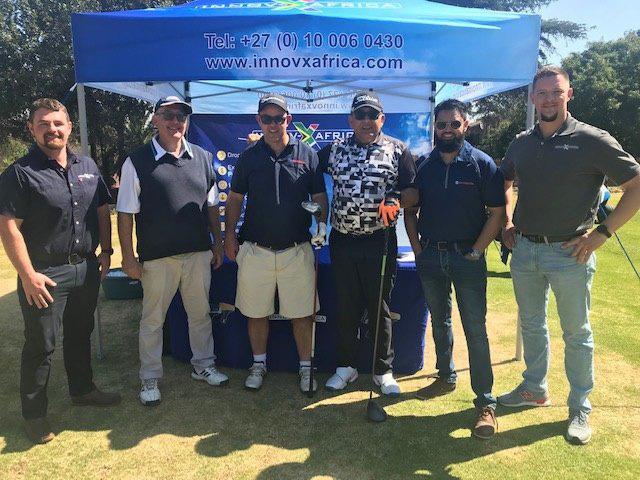
On a wonderfully crisp Johannesburg winter morning earlier this year, 108 golfers gathered at the Bryanston Country Club in Johannesburg to play the pristine 18-hole golf course and enjoy a long overdue catch up with industry colleagues and friends.
At the end of a long but rewarding day, the golfers were treated to a fantastic awards evening that also recognised some of the star players of the event.
Sassda would like to thank the following sponsors for their support in making this golf day so unforgettable and look forward to hosting a bumper package of regional golf days in 2023! E-mail kstevens@sassda.co.za to find out more.
ISSUE 3 2022 36
THANKS TO SPONSORS Air Liquide Columbus Stainless NDE Grinding Techniques Unique Welding Innov-X-Africa TÜV Rheinland
HOLE IN ONE
GOLF DAY HITS A










































































